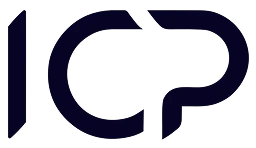Best Kanban task management in 2022
Kanban task management, a work organization system, dates back to the 1950s.

Tell our team about your needs and we will customize the tool as part of your chosen package!
Kanban task management, a work organization system, dates back to the 1950s. The experts in the application of this solution claim that it allows one to increase teamwork productivity by 20-30% in a short time. The Kanban method was first used to manage production processes in Toyota facilities. Today top programs for managing tasks use Kanban boards because of their benefits to supervising projects.
What is Kanban task management?
Kanban is a signboard or a plate in Japanese (literally Kan – visible, Ban – a piece of paper). Its original version relied on the circulation of product cards and served to optimize repeatable production processes. For the first time, it was applied in Toyota facilities and it aimed to coordinate the production process and supply chains to minimize the need for the storage of subassemblies.
In practice, it was accomplished by pinning cards with consumed materials to a generally available task board, which was a signal for the team delivering the given component that it is necessary to prepare its next batch. The assumed result of such a coordination of activities in individual departments of an enterprise is to reduce the need for storage of finished products, reduce shortages and increase productivity.

The Kanban method-a visible list
Let's start by looking at the method itself. Kanban originates from Japan, and the word means "a visible list", i.e., a "card" on which tasks to be performed are presented. Although this tool, which debuted in the Toyota factory, was originally used to control production, its simple rules can be successfully employed in any industry or team. In its simplest form, all you need is a large board hung in a place visible to the entire team, sticky notes, and a felt-tip pen. What does project management look like if we use Kanban? We write down all the tasks the team has to perform on sticky notes. We divide the board into three columns (in the basic version) named: "to do", "in progress" and "completed", and then we place the particular notes in them. The tasks are moved from one column to another after the specified criteria are met (e.g., only a task accepted by the client can be considered completed). The important thing is that the number of tasks that can be placed in one column at the same time is limited.
What makes this method powerful? It is much easier to manage tasks if they are something more than just empty phrases in our heads—if they are given a physical form. Naming and visualizing all the tasks the team has ahead of them allows them to determine the amount of work to be done. It is no surprise that it usually turns out that there are many more of them than it seemed at first. Thanks to this, the project status is always within arm's reach and all team members know at what stage their work is. This allows us to identify potential problems quickly, before they become real threats, and to eliminate the reasons for standstills. Effect? The job is done on time, and the final product is of better quality.
Kanban Software
In the days of the Internet and dispersed teams, the Kanban system has gained its electronic counterparts. You can benefit from all the advantages of this solution in ICP, where project management is carried out using a virtual Kanban board, allowing for workflow visualization. All you have to do to change the task status or transfer it to another section is... move the "card" corresponding to it to the proper place. The columns dividing the tables are fully modifiable. They can be removed, added, or renamed. The cards themselves are also equipped with multiple practical functions. In addition to the text description, you can also add such items as checklists, comments, attachments, and color labels categorizing our activities or deadlines automatically saved in the calendar. The legible task distribution and transparency of process flow in the company provided by ICP make communication among the employees much more efficient and improve work productivity.
It's past time you discovered the power residing in the seemingly inconspicuous cards. Kanban is a tool that provides a simple recipe for reducing task performance time, increasing the quality of provided solutions, and gaining control over the process we work in. The Kanban method is an effective method for increasing project team motivation and effectiveness.
Application of Kanban
Kanban, in its original form, is still used to optimize repeatable production processes, for instance in the automotive or electronic industry. However, dozens of its modifications have appeared over the years, aiming to answer to specific needs of enterprises and the specific nature of their production process. A range of benefits derived from using this process visualization method resulted in its adaptation to solutions outside production industries as well.
The assumptions and concept of implementation of Kanban in software engineering were presented by David J. Anderson in his book Kanban: Successful Evolutionary Change for Your Technology Business published in 2010. To manage his project, he broke it down into a range of tasks composing and divided it into three groups: to do, pending, and completed. Specific contractors are assigned to each of them, which allows easy identification and elimination of potentially problematic areas.
This also facilitates optimization of the process of project implementation and allows control over relationships between successive tasks or their internal division into even smaller units to be performed serially or in parallel. Today, such a modified Kanban is successfully used to organize project-related work in creative agencies, IT companies, architecture studios, and other entities.
Implementation of Kanban in IC Project
One of the more interesting software out there that allows the implementation of Kanban in an enterprise is IC Project. It allows transparent organization and supervision of current projects. The central part of every project is the Kanban board divided into columns with tasks pinned to it. Conventionally, three categories suggested by Anderson are available, but it is also possible to create a new one.
Tasks are placed within these categories. Each task has a range of attributes such as the title, deadlines or assigned employees, and their working time. Moreover, each task can feature a to-do list of smaller activities leading to the completion of the task, file exchange, or even a chat between the assigned individuals. A huge advantage of tasks is that they can be assigned cyclicality, which comes in handy when it is necessary to prepare reports or carry out supervising activities.
The tasks pinned to the board are handled in an exceptionally user-friendly manner by the simple drag and drop mechanism. The same method is used to assign employees to tasks or remove them and to add files necessary to complete a task or made as part of the given activity. Using built-in options, it is also possible to automatically or manually send reminders of upcoming deadlines and the content of the given working project.
Effectiveness of Kanban
Implementation of Kanban in the Toyota facilities brought an array of benefits. The stock was reduced by 75% and shortages by as much as 95%. Production went up by 25% and production space was reduced by 10%. At the same time, the surface area of warehouses and the number of employees delegated to them decreased. Such high effectiveness led to a huge interest in this method of production process organization in companies operating in various industries.
The most noteworthy benefits of using Kanban most frequently mentioned by practitioners and theorists of management are:
- Improved transparency of the project leading to a better overview of its completion status,
- Improved efficiency through ease of identification of problematic areas,
- Improved productivity through better supervision over the number and type of tasks assigned to a specific team or a specific employee,
- Better predictability of results and the dates when they are achieved.
Norbert Sinkiewicz, Head of Marketing w IC Project, underlines the importance of transparency of tasks performed as part of a project: The methods for managing tasks in Kanban are praised by our clients – it creates great possibilities for transparency and intuitive management of tasks. It allows ongoing control over the progress and status of tasks on the common board and every single task offers a plethora of additional functions waiting to be used. As a result, you always know what stage of working on tasks your team is currently at.
Does Kanban have any drawbacks?
Just like with every organization method, Kanban does have some weaknesses. First of all, its effective use requires some practice and adaptation to the specific nature of the enterprise, its orders, and the habits of its employees. This results in the simultaneous operation of several dozen types of Kanban and moving around them may prove very difficult at first, thus discouraging the implementation of this method in an enterprise.

Some features of the Kanban system may result in the fact that it will not allow such remarkable results outside extremely disciplined Japan. First and foremost, its efficient implementation requires the full involvement of all employees if we want to achieve maximum effectiveness at each stage of task performance. Any delays, even ones caused by external factors, may lead to an avalanche-like drop in the efficiency of all production departments. Fortunately, these limitations have less importance and effect on the timeliness of task performance in the project context.
Kanban in a nutshell
As a method of organization, Kanban does a great job both in production enterprises and in entities relying on projects. Due to its ease of modification and a multitude of variants, it is easy to adapt to the specific activities of the given enterprise, increasing the transparency of the projects being carried out. Breaking them down into smaller tasks to which specific employees, deadlines, and guidelines are assigned makes the supervision over the performance of the projects much simpler. It is also easier to respond to cropping up problems.
Contemporarily, Kanban is usually implemented in the form of an online computer program, e.g. IC Project. This allows easy management of and communication with the employees working in the head office and those working remotely. Kanban task management gives the possibility of assigning them to tasks, communication between all employees assigned to the given activity, easy exchange of files, or a reminder system makes the completion of projects in an enterprise flow seamlessly – at least in organizational terms.
Also read

How to create an effective project plan?
A project plan is a key element of every successful project. Without a proper plan, projects can become chaotic and difficult to manage.
Try IC Project in your company Our team is ready to help!

Create a free account and test with no obligation




